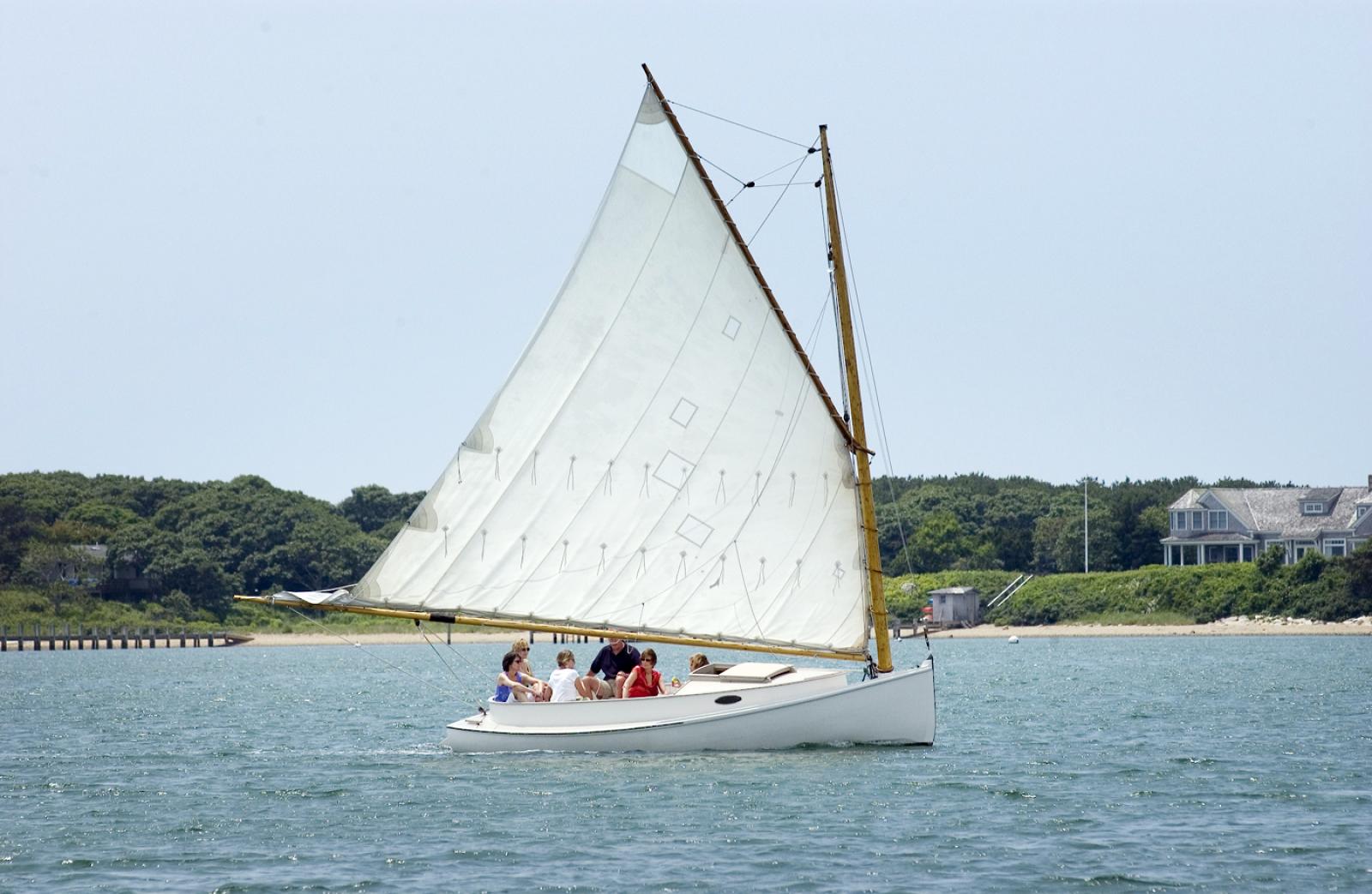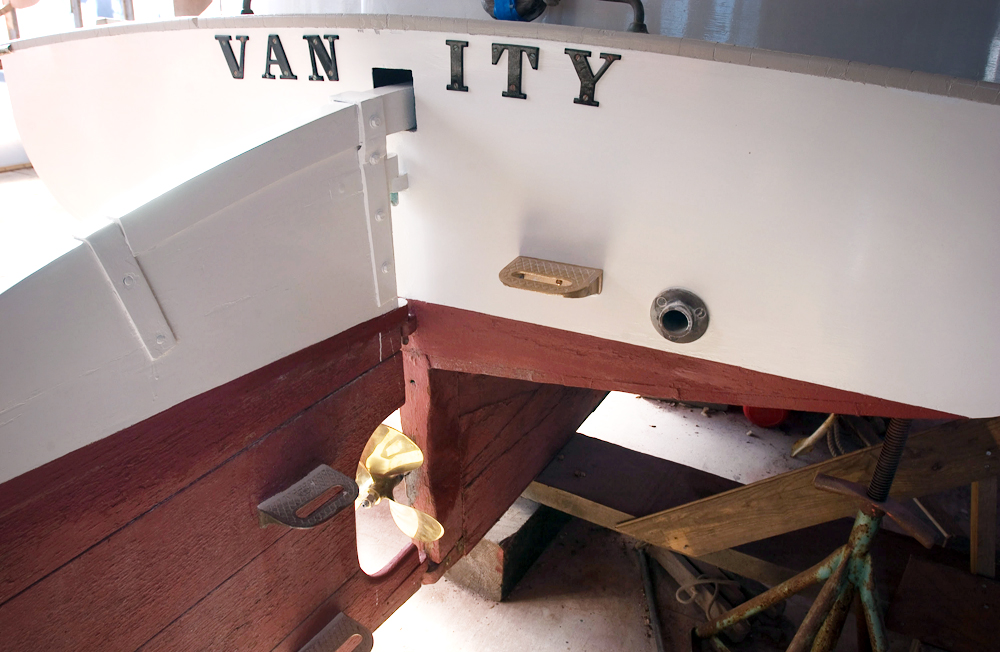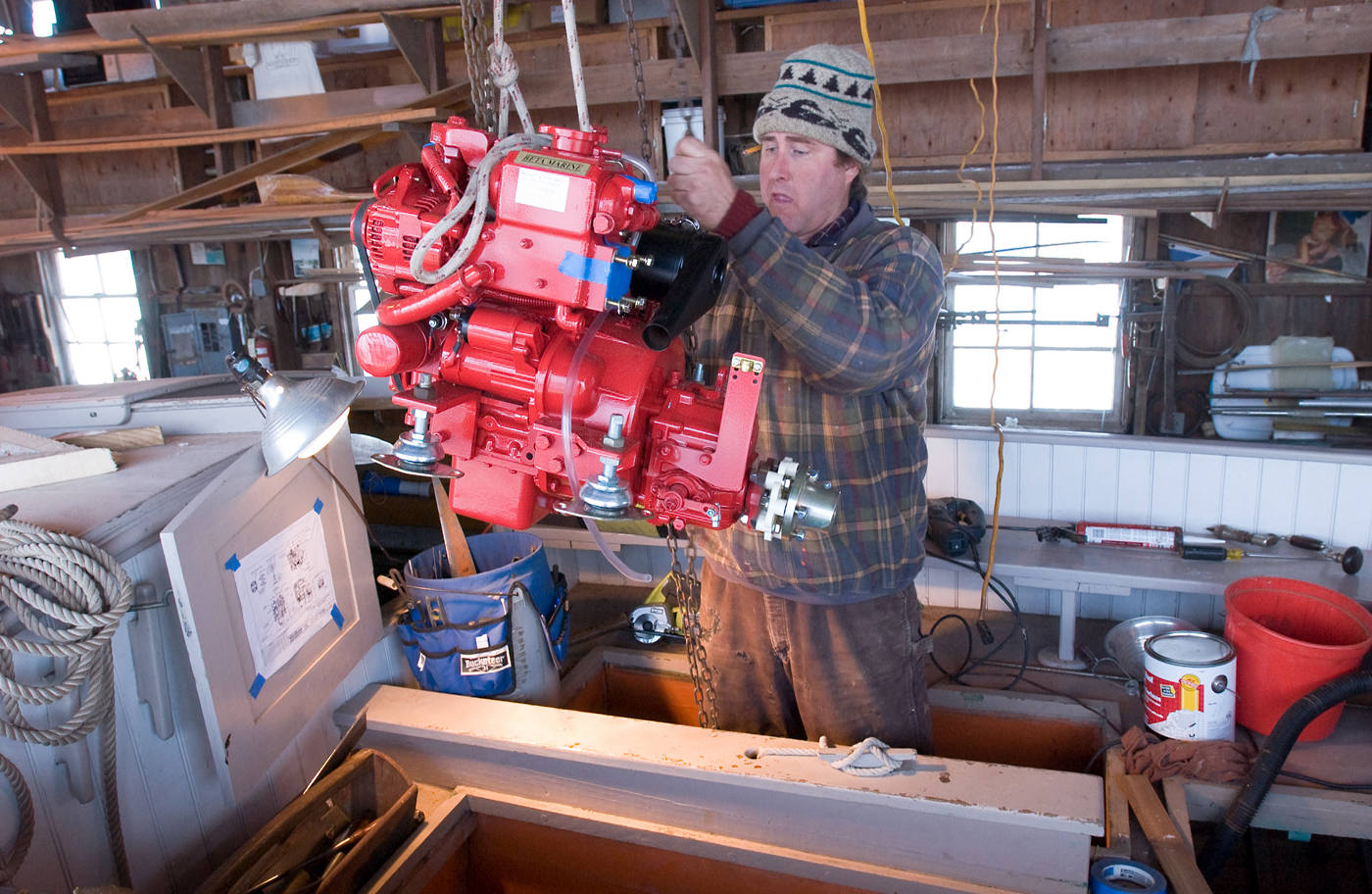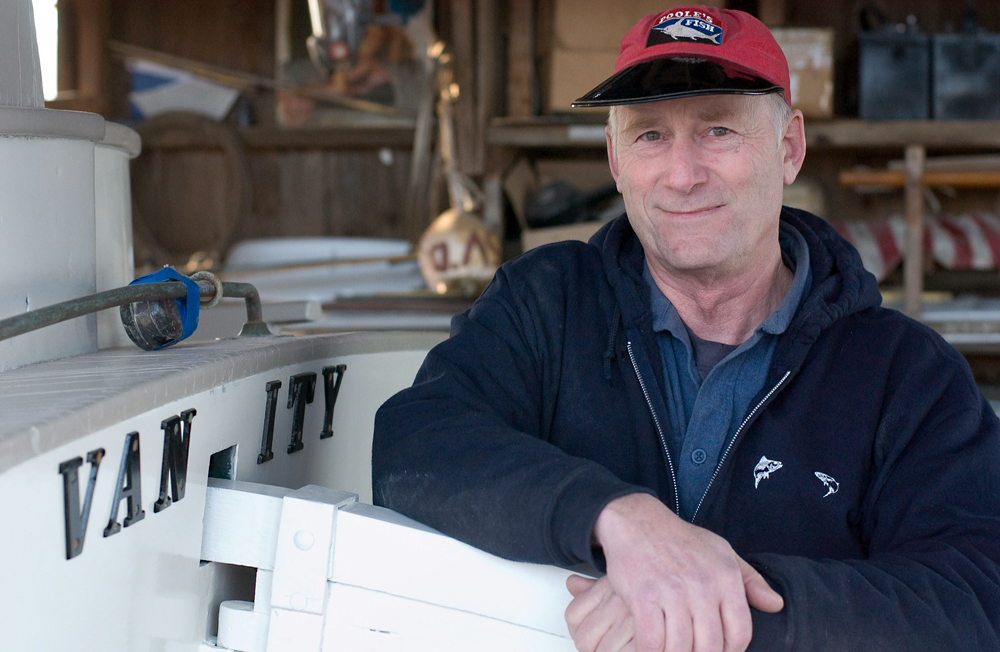The 21-foot wooden catboat Vanity has been crisscrossing the Edgartown Harbor in the last several weeks, the start of what will be a busy summer. Vanity is one of the most storied catboats on the Atlantic seaboard, and one of the last of the working wooden catboats to have survived changing times.
And she was built in Edgartown.
At 81, Vanity is a living story of the region’s connection to fishing and maritime commerce.
“That boat is so sweet. She almost sails herself,” said Capt. Chris Murphy, 64, of Chilmark. The captain, the boat and the Martha’s Vineyard Museum have recently struck a deal. The museum owns the boat. Captain Murphy is retired and loves to sail; so on most sunny, breezy days he is available to take friends of the museum out for a sail.
On Monday he took the boat sailing with a double reef. On Saturday it was one reef. Last Sunday, when the air was light, he took Vanity out under full sail.
This is Captain Murphy’s third summer at the helm. And this summer is especially sweet, since last winter Vanity was repowered with a brand new 14-horsepower inboard diesel engine.
“The boat originally had an engine,” Captain Murphy said. Vanity belonged to one of Edgartown’s finest watermen, Oscar Pease. Mr. Pease would go bay scalloping in the fall and fishing in the summer with Vanity. “In the summer, he would spruce her up and take people out bluefishing,” the captain said. Captain Pease died in 1995, and soon after the boat was turned over to the museum.
When the vessel was rebuilt more than a decade ago, she did not have a motor.
And being motorless might have worked out, but for the breach at Norton Point beach three years ago, which has created unusually strong currents in the harbor. A gasoline outboard was later added to her stern to give the vessel some power against the currents and the sometimes light air.
Captain Murphy’s experience with catboats and his concern for that boat brought new questions about the use of auxiliary power. “The outboard didn’t really do the job. The boat was dying for an inboard,” he said.
Mr. Murphy said he was always concerned when he came about and pointed the boat in a different direction, that the lines to the sheet would tangle on the outboard. And if there was sufficient wind, he had the worry that with the power of so huge a single sail, a tangled line might yank the outboard off the mount and throw it into the water.
Last winter the problem was solved. Thanks to an anonymous donation to the museum, the job was done correctly. Under the watchful eye of Nat Benjamin of Gannon and Benjamin, experienced shipwright Bill Benns installed the new, red, Beta diesel. It is not precisely where the old inboard motor originally sat, but with pragmatic innovation as a guide, the motor now sits in what was a port-side fish well; the propeller shaft is pointed to the stern.
Mr. Benjamin said that when the boat yard rebuilt Vanity 10 years ago, they were told the boat would never have an engine again, which made restoring an engine to the exact spot last winter nearly impossible. “The shaft is offset, but it is angled towards the center line. So at the stern post, we fabricated a housing for the cutless bearing that passes right through the stern post. And then we cut an aperture in the rudder,” Mr. Benjamin said.
Having a powerful inboard engine in Vanity gives the captain an alternative source of power when the wind suddenly lightens, which it does around here. And that gives the captain and his guests some certainty about when a cruise will begin and end.
And besides, “It is nice to go back to a tiny inboard engine,” Captain Murphy said.
And guests aboard Vanity get more than a boat ride; they get a history lesson. Captain Murphy is a semiretired, seasoned commercial fisherman who loves to tell stories. “I bought a catboat that was 17 feet in length, built by Dolphie Morgan when I was 21 years old and just out of doing two years in the Peace Corps,” he recalled. “The boat was called Edith.” He sailed Edith in Edgartown and later around Menemsha.
He also has had a long career as a fisherman pursuing fluke, scup, squid, swordfish and tuna. He owned a 42-foot lobster-boat-design fishing boat called Theresa M.
About Vanity, he said: “To me this boat is a direct tie to the history of Martha’s Vineyard and fishing. I knew Oscar Pease and when I was a kid there were quite a lot of catboats working here. When I started sailing my catboat, he was one of the gentler critics. On the waterfront everyone has their own opinion on what you are doing wrong. He was gentler.”
Add to that the history of the boat. It was built by Manuel Swartz Roberts in 1929 at his shack, the site today of the Old Sculpin Gallery at the foot of Dock street in Edgartown.
And of course no one appreciates Captain Murphy and Vanity more than the people at the Martha’s Vineyard Museum. “Vanity is our floating living history exhibit,” said David Nathans, executive director of the museum. “From time to time the boat is used for charters. Now, with Chris Murphy’s volunteer captain position, he knows more about fishing and working catboats than most people alive. He is a tour guide for anyone on the boat. He has had a long association with the museum, first through his father, Stanley Murphy, and then through his wife, Barbara, who has worked as a library volunteer. These connections are wonderful. He knows us and the boat.”










Comments
Comment policy »